Review of Cartographies in “The Prague Post”
A collection of essays and interviews on a “nomad poet”
Posted: April 4, 2012
(original here)
By Stephan Delbos – Staff Writer | Comments (0) | Post comment

Walter Novak
For many readers and writers, poetry seems an increasingly anachronistic practice in our digital age, one that has failed to keep up with revolutionary developments in the ways we read and process information. But one writer’s concept of “nomad poetics,” which crosses linguistic and geographical borders, may offer a way to keep poetry viable. In any case, it is worth further consideration, as a new collection of essays shows.
Poet, translator, teacher and literary theorist Pierre Joris, born in Strasbourg, France in 1946 but brought up in Luxembourg, was immersed in a multilingual world of French, German and Luxemburgish from his earliest days. After studying English at school, Joris moved to the United States, where he earned his Ph.D. He has traveled widely around the globe, living in New York, the United Kingdom, North Africa and France, among other locales. He currently teaches at the University of Albany’s Department of English.
Throughout his travels, Joris has worked assiduously as a poet writing in English, an essayist and a translator. He was a close friend of many key members of the second generation of New York School poets and was the first translator of many Beat classics, including Jack Kerouac’s Mexico City Blues, into French.
More recently, Joris has published several volumes of translations from German language poet Paul Celan, the most recent of which, Lightduress, won the PEN Award for translation in 2005, leading Marjorie Perloff to call Joris “Paul Celan’s finest Anglo-American translator” in her essay “The Return of Luap Nalec: Pierre Joris ‘Translating’ Paul Celan,” one of many fine contributions to Cartographies of the In-Between.
This interesting and illuminating collection of essays, appreciations and interviews features many writers younger than Joris but also several established figures of Joris’ generation, including Perloff, Alice Notley, Clayton Eshleman, Jerome Rothenberg and Charles Bernstein. Indeed, this volume is star-studded; for those unfamiliar with Joris and his work, a simple glance at the contents page will be enough to recognize he is a writer who deserves closer attention.
While Joris’ translations have often tended to overshadow his own writing, they are only a fraction of his substantial body of work. The key tenet of Joris’ writing is the concept of nomad poetics, which he has defined in a series of essays and manifestos published over several decades, writing, for example, “The days of anything static – form, content, state – are over,” and “a nomadic poetics will cross languages, not just translate, but write in any or all of them.”
What Joris is proposing has both practical and theoretical applications. Firstly, the concept of writing in all languages, which in some ways harkens back to the Modernist poets like Ezra Pound and T.S. Eliot’s application of foreign languages in their poetry, or, closer to Prague, the Czech poet Ivan Blatný’s late poetry, which moves seamlessly between Czech, English and German, often in the same line, is clearly only possible for writers in command of several languages and only comprehensible for multilingual readers.
But the theoretical application of nomad poetics may actually be more important: the “noet,” as Joris terms the nomad poet, has a certain worldview and a certain outlook on how a poem should move and function, following the rhizome structure first proposed by French theorists Gilles Deleuze and Felix Guattari, expanding and moving at all points at once, rather than the one-sided, top-down structure of traditional verse.
This is heady stuff, to be sure, but Cartographies of the In-Between does not get embroiled in excess theory. Nor does it avoid theory. Instead, it finds a middle way between criticism, theory and more journalistic essays and interviews.
The approaches these contributors take to Joris’ work is varied, ranging from poems dedicated to Joris by Nicole Brossard and Abdelwaheb Meddeb, to Jennifer Moxley’s close reading of Joris’ “Canto Diurnal” project, in which Joris uses the length of day to dictate the length of each of the sections of the discursive poem. Here Moxley points out some of the clearer connections between Joris’ poetry and that of American poets including Ezra Pound, Robert Duncan, Robert Creeley, Charles Olson and Gustaf Sobin.
But Moxley also makes some interesting points about the dialogue of allusions between poets, writing, “They assume a grander dialogue, and point to texts outside the margins, the way a name uttered in a tense moment at the family dinner table can evoke an entire secret history blocked to any casual guest.”
Collections of essays about a single poet often have an overtly officiating tone, as if their publication is framing the poet and establishing a place for him within the museum of literary history. Yet the picture of Joris that emerges from these pages is a vital one, a poet still very much alive and adding to his own body of work and English-language literature.
This lively tone is helped in part by the way the editor, Peter Cockelbergh, a writer and friend of Joris, has arranged the collection.
Not only has Cockelbergh contributed the introduction as well as an essay on Joris’ nomad poetics, but he has organized the essays into sections titled “Filiations,” “En Route,” “Spaces,” “Trans” and “PoPoPo.” Dividing each of these sections is a series of vignettes titled “Geographemes,” each of which is dedicated to a place in which Joris has lived, the United States, Luxembourg, the United Kingdom, France and Germany. Each of these is a portion of an interview between Joris and Cockelbergh looking at specific geographic aspects of Joris’ craft. The entire collection, then, is as intellectually and formally nomadic as Joris’ writing.
Joris’ concept of nomad poetics offers poets an intriguing, multifaceted path in our increasingly globalized society and its increasingly globalized literature. Cartographies of the In-Between is an invaluable document that traces the many lines of flight of Joris’ poetics and his thought.
Stephan Delbos can be reached at
sdelbos@praguepost.com

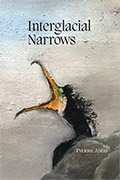 “Interglacial Narrows (Poems 1915-2021)” Contra Mundum Press
“Interglacial Narrows (Poems 1915-2021)” Contra Mundum Press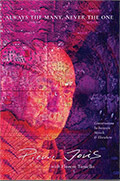 “Always the Many, Never the One: Conversations In-between, with Florent Toniello” Contra Mundum Press
“Always the Many, Never the One: Conversations In-between, with Florent Toniello” Contra Mundum Press “Conversations in the Pyrenees”
“Conversations in the Pyrenees”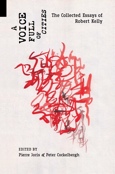 “A Voice Full of Cities: The Collected Essays of Robert Kelly.” Edited by Pierre Joris & Peter Cockelbergh
“A Voice Full of Cities: The Collected Essays of Robert Kelly.” Edited by Pierre Joris & Peter Cockelbergh “An American Suite” (Poems) —Inpatient Press
“An American Suite” (Poems) —Inpatient Press “Arabia (not so) Deserta” : Essays on Maghrebi & Mashreqi Writing & Culture
“Arabia (not so) Deserta” : Essays on Maghrebi & Mashreqi Writing & Culture “Barzakh” (Poems 2000-2012)
“Barzakh” (Poems 2000-2012) “Fox-trails, -tales & -trots”
“Fox-trails, -tales & -trots”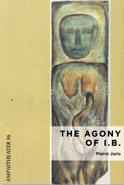 “The Agony of I.B.” — A play. Editions PHI & TNL 2016
“The Agony of I.B.” — A play. Editions PHI & TNL 2016 “The Book of U / Le livre des cormorans”
“The Book of U / Le livre des cormorans”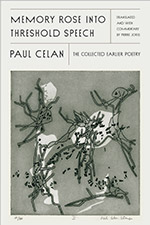 “Memory Rose Into Threshold Speech: The Collected Earlier Poetry of Paul Celan”
“Memory Rose Into Threshold Speech: The Collected Earlier Poetry of Paul Celan”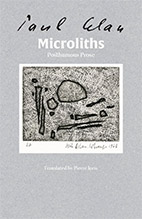 “Paul Celan, Microliths They Are, Little Stones”
“Paul Celan, Microliths They Are, Little Stones”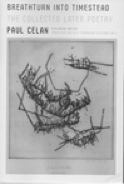 “Paul Celan: Breathturn into Timestead-The Collected Later Poetry.” Translated & with commentary by Pierre Joris. Farrar, Straus & Giroux
“Paul Celan: Breathturn into Timestead-The Collected Later Poetry.” Translated & with commentary by Pierre Joris. Farrar, Straus & Giroux
You should link back to the original, shouldn’t you ?
just did.
An excellent and accurate review. Keep your eyes open for Volume II. I shall be contributing a piece on the Nut phase of this mighty Oak.